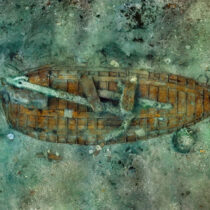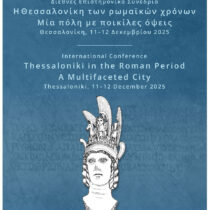When a floor mosaic was discovered in a specific room of the Roman villa at Strogyli, during the excavational works there, it was decided that the mosaic should be left covered for its protection by a layer of earth which was to be removed in the following year, when the works would be resumed.
However, the course of conservation had a slow pace, due to the difficulties the floor mosaic presented. The removal of the earth layer revealed a multitude of large and small roots coming through the mosaic, a considerable number of loose or missing tesserae, cracks and sunk sections of the mosaic layer, small and extended damages as well deteriorated parts of the mosaic surface.
The mosaic belongs to the so-called opus tesseratum group, while each side of its tesserae measures 1 cm. Its decoration consists of geometric patterns (bands with alternating colours and decorative motifs). We would like to thank Ms A. Douzogli,at that time Ephor of the IB’ Ephorate of Prehistoric and Classical Antiquities, for her support and understanding of the difficulties we faced, as well as the inhabitants of the Strogyli municipality and its mayor, Mr Thomas Botsaris, for the complete support and the hospitality they offered us.


